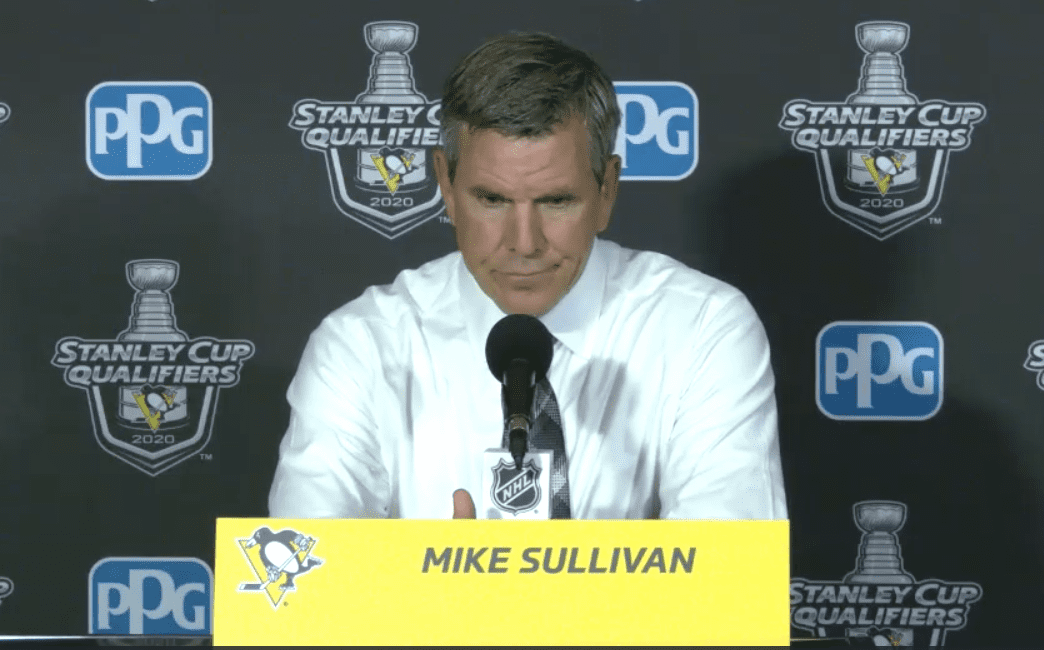Penguins
‘Heed the Lessons,’ Thoughts From Penguins Game 1 Failure

(TORONTO, ON) — The Pittsburgh Penguins peppered Montreal Canadiens goalie Carey Price with 41 shots on Saturday night. The Penguins earned a penalty shot, a two-player advantage, seven power plays, and a territorial advantage. And yet they lost to the Montreal Canadiens 3-2 in OT at the Scotiabank Arena.
In the first 10 minutes, the Penguins brilliantly exploited the Montreal defense and controlled the game. The Penguins fired 18 shots on Montreal goalie Carey Price and seemingly, most of those shots were from within six feet. It was winning hockey.
And then, it stopped. The offense generated from the end-wall to the crease operation seemed to vanish in favor of shots from the high zone.
“Luckily, it’s not a single-elimination tournament,” Bryan Rust said. “We’ve got to heed the lessons. We did some really good things.”
Over the course of three periods and most of a full overtime period, the Penguins were statistically superior. The Penguins had 55% of the shot attempts at even strength, 55% of the scoring chances, and 58% of the high-danger scoring chances, according to NaturalStatTrick.com.
“It’s just one game at a time. That’s what we have to focus on as a team,” Penguins goalie Matt Murray said. “We’ll learn from this game, move by it and get ready for Game 2.”
The Pittsburgh Penguins trail their best-of-five series against the 12th seed Montreal Canadiens, 1-0. Montreal would have missed the playoffs by 10 points under normal circumstances, but the Penguins have granted Montreal life, momentum, and significant advantage.
“There are lessons to be learned, but it’s a marathon, not a sprint,” Rust said.
Well, maybe not. The Penguins must win three of four games to advance. To whit, the NHL stopped using five-game series in 1986. In those five-game series, the team which won the first game won 82% of the series.
It’s not impossible, and it’s not unprecedented, but you and the Penguins should understand the depth of the hole in which the Penguins put themselves.
The Penguins would be wise to stop thinking it’s a marathon and stop taking comfort in things they’ve done well, and start being sick over losing.
Pittsburgh Penguins Failure and Shortcomings
Despite the significant advantages on paper, the Penguins ceded real advantages to Montreal. Sure, the Penguins put 41 shots on Price, including some golden scoring chances.
The primary thing the Penguins failed to do after the began shooting from higher in the zone was get traffic in front of Carey Price, who saw nearly every shot the Penguins ripped his way.
The power play. 1-7, including a five-on-three for 92 seconds in the third period. It could have been a series changing goal. Instead, it may have been a series changing kill.
The Penguins put Jason Zucker on the top unit instead of Patric Hornqvist, and the results were not good. The Penguins lacked net-front presence, and similar to their 5v5 shot selection, the Penguins fired away from 20-feet or more, and Price saw everything.
“The thinking was (Zucker) is a good player,” Sullivan said in defense of using Zucker on PP1. “We understand the power play has to be better. We’re working through this process. Obviously, it had an opportunity (Saturday) to be the difference, and it wasn’t.”
That’s an understatement.
The Penguins power play foibles were in part a result of not getting enough traffic in front of Price. Too few times did Zucker, Crosby, or Guentzel stick their backside into Price’s facemask. Simple. Get there. Stay there. Fight to be there.
The Penguins also didn’t make enough good shots. On the power play and at even strength, they painted the glass with errant shots. Overall the Penguins had 96 shot attempts. 96. and just 41 of those were on net.
“We’ll go back to work tomorrow,” Sullivan said coldly.
That’s a terrible percentage. Conor Sheary even missed the net on the power-play.
“The one area we could have improved on in our overall game, the power play included, was a net-presence,” Sullivan conceded. “Just making it hard for Price to see the puck. I thought we had opportunities to get to the net and take away his sightlines, and we didn’t.”
How does a team fail to take those opportunities in a playoff setting? In that answer lies a bigger can of worms, and in that answer lies the key to the Penguins’ success.














